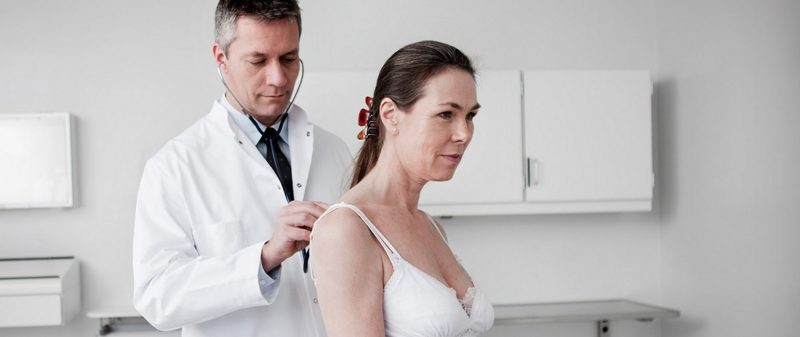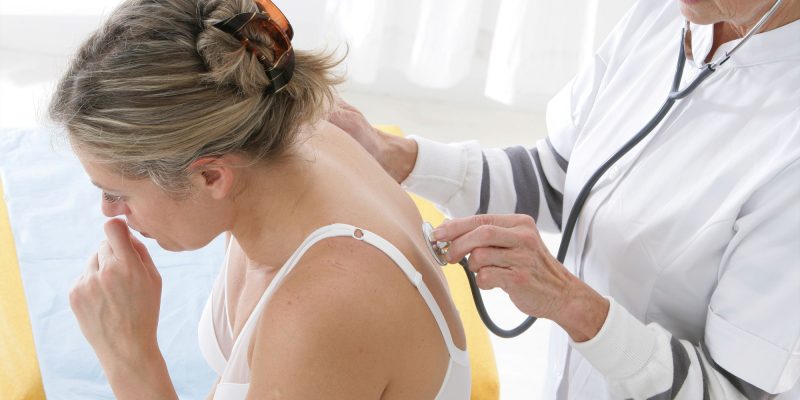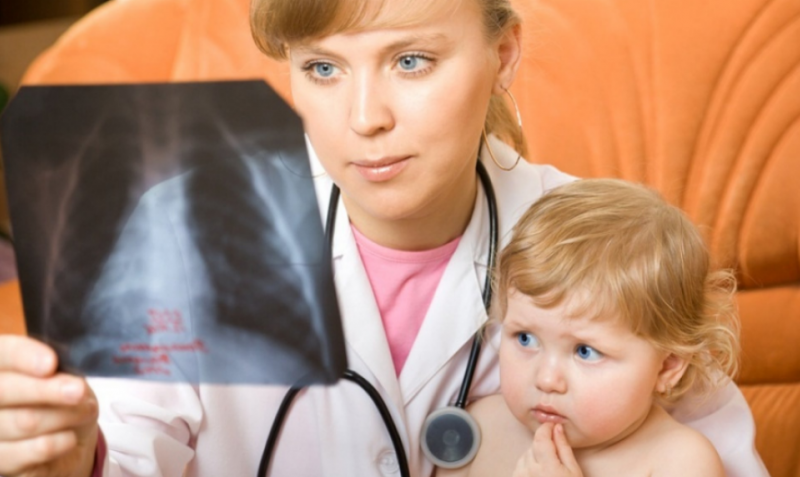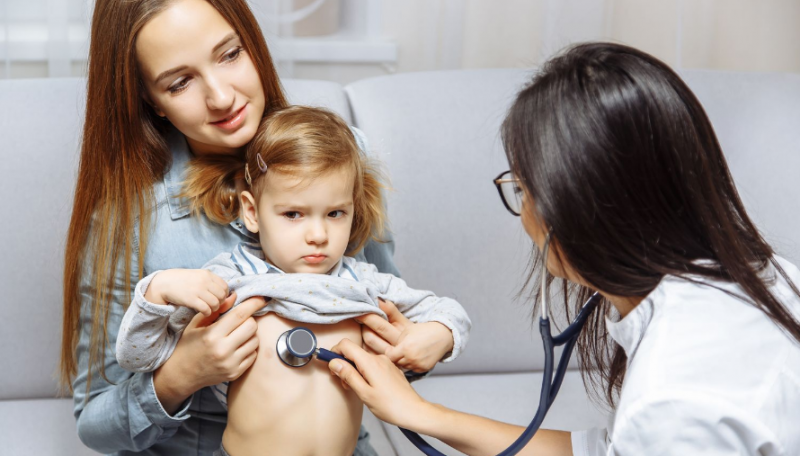Bronchopneumonia is one of the types of pneumonia that often affects patients who have already had respiratory diseases. In some cases, the pathology has a fulminant course, so the patient should be shown to the therapist and pulmonologist as soon as possible. So, further we will understand how bronchopneumonia differs from other diseases of the respiratory system, why it occurs and how it manifests itself, and also how it can be cured.
Material Content:
What is bronchopneumonia
Bronchopneumonia is an inflammatory disease of the respiratory system that affects not only the lungs, but also the bronchi.
There are several varieties of this ailment:
- Catarrhal. The disease begins with the fact that the bronchi are affected by a virus or pathogenic microorganisms. The resulting inflammation gradually moves to the lungs. If untreated, the disease can turn into a purulent form.
- Focal unilateral bronchopneumonia. Diagnosed most often. The defeat affects only one side of the lungs and bronchi, most often it is the right side due to the structural features of the respiratory system.
- Bilateral bronchopneumonia, sometimes called croupous. Lesions affect both halves of the lungs. With this type of disease, early diagnosis and well-chosen therapy are extremely important. Otherwise, the patient is at high risk of death.
All three varieties have similar symptoms, and the rate of recovery and the presence of complications depend on the age and condition of the patient's immune system.
Causes and Risk Factors
Bronchopneumonia may occur due to the following adverse factors:
- elderly or infant age, as patients of precisely these categories are most susceptible to any pathogenic microorganisms;
- if a person has already suffered pneumonia and is again infected with a viral or bacterial infection;
- high risk of inflammation in smokers, as their lungs are most often exposed to such destructive factors as nicotine and smoke;
- weakened immunity and constant stresses make a person more susceptible to any ailments;
- chronic diseases of ENT organs.
Knowing the risk factors described above, it is easier for patients to prevent the development of the disease.
Symptoms and signs of the disease in children and adults
Manifestations of the disease are different in adults and small patients.
At an older age, patients complain of the following manifestations of the disease:
- increased body temperature to high values, severe weakness, decreased performance, excessive sweating at night and in the evening;
- often there is a lack of appetite and sleep, discomfort in the muscles, especially the calf;
- cough, which will first be dry, and subsequently sputum of green color with yellow impurities will begin to separate;
- all patients complain of severe shortness of breath and tachycardia, which occur with minimal exertion;
- patients note the presence of discomfort in the chest, which intensifies during coughing.
For children, all of the above symptoms are characteristic, which in childhood can be rapid. Also, in some cases in children, the disease can be asymptomatic for a long time. In this case, the unusual breathing of the baby should alert the parents. Caution should also be taken if the recovery from ARVI is delayed in young patients: this indicates that most likely the child has already begun bronchopneumonia.
Diagnosis and treatment to the doctor
As soon as the patient has suspicious symptoms, he needs to consult with a physician and pulmonologist as soon as possible in order to undergo a diagnosis.
Specialists prescribe the following examinations:
- general analysis of blood and urine to detect an inflammatory process in the body;
- CT or X-ray to determine foci of inflammation and the presence of changes in the tissues of the bronchi and lungs;
- when sputum goes away, bacteriosis to identify pathogens in order to prescribe suitable antibiotics.
According to the results of diagnostic measures, patients are prescribed the necessary treatment.
Bronchopneumonia treatment
 Therapy of the disease is comprehensive and includes the following activities:
Therapy of the disease is comprehensive and includes the following activities:
- Properly selected drug treatment, depending on the type and type of pathogen.
- Physiotherapeutic procedures. They include massages, breathing exercises and inhalations. All this helps to quickly clear the lungs and bronchi of exudate and prevent the occurrence of congestion.
- Compliance with bed rest and diet. The patient should spend as much time as possible in bed until his condition is stabilized. Otherwise, the healing process will be delayed, the risk of complications will increase. Diet food is designed to saturate the body with the necessary vitamins and minerals, its basis should be foods rich in proteins and vitamins.
Subject to all the above points of the comprehensive treatment of bronchopneumonia, the disease passes in a short time and does not cause complications.
Drugs and antibiotics
The basis in the treatment of bronchopneumonia is antibiotic therapy.Drugs are prescribed strictly individually, based on the variety of the disease, the age and weight of the patient, his state of health. Antibiotics can be in the form of tablets, or in the form of injections. They must be taken strictly on schedule, avoiding omissions.
It is interesting:antibiotics for sore throat in an adult in tablets
In addition to the above medicines, patients are prescribed antihistamines, mucolytics and antipyretic drugs.
The following drugs are used to treat bronchopneumonia:
- Broad-spectrum antibiotics. Their reception is justified until the main pathogen is determined. Most often, patients are prescribed Amoxiclav, Azitrox, Klacid, Rulid.
- If there is no improvement, then according to the results of studies on bacterial sowing, the patient is prescribed reserve antibiotics, designed to fight a specific type of bacteria. Depending on the type of pathogen, patients are prescribed Unidox Solutab, Levostar, Suprax.
- To relieve fever and intoxication symptoms, the use of non-steroidal anti-inflammatory drugs, such as Nimesil, Paracetamol, Fervex, is indicated.
- To facilitate the release of sputum, the patient is prescribed such mucolytic agents as Thermopsis, Mukaltin, Ambrobene, Bronchicum.
All the above medicines and their dosage can only be prescribed by the attending physician. Self-medication will lead to a worsening of the patient's condition and exacerbation of chronic diseases, since the above medicines have a large number of side effects.
It is important to remember that if a child falls ill, all therapeutic measures will be carried out only in a hospital until the little patient is completely recovered. This is due to the fact that in childhood there is a higher risk of developing complications.
With proper treatment, the disease passes without a trace. After some time, it may be necessary to do a fluorogram or CT scan of the lungs and bronchi to make sure there are no residual foci of inflammation or there is a secretive inflammatory process.
Folk remedies for bronchopneumonia
It is impossible to cure bronchopneumonia in children and adults exclusively with folk remedies. Decoctions and infusions of chamomile, sage, St. John's wort, calendula are good as adjuvants, provided that patients do not have their intolerance.
In any case, only a doctor can prescribe this treatment, based on the stage of pneumonia, the age of the patient, and the dynamics of recovery.
In no case should medical treatment be replaced with homeopathy or decoctions of medicinal herbs, as this will lead to a worsening of the patient's condition and the development of numerous complications.
Is the disease contagious to those around you?
Pneumonia, in which inflammation affects not only the lungs, but also the bronchi, can be dangerous to others. The fact is that with a cough and sputum, a large number of bacteria enter the air. A person with a healthy and strong immune system may not get infected, but for the elderly and babies the danger is obvious.
Read also:lung sarcoidosis
Therefore, if patients with pneumonia appear at home or among friends, contact with them should be limited to people with a weakened immune system, pregnant women, smokers.
The patient should also have his own bedding and tableware, and the room where he is located should be ventilated and cleaned daily with a damp cloth and disinfectants.
Possible complications
 Incorrect treatment of bronchopneumonia, advanced cases of the disease in adults and small patients can lead to the development of numerous complications:
Incorrect treatment of bronchopneumonia, advanced cases of the disease in adults and small patients can lead to the development of numerous complications:
- Inflammation of the pericardial sac. Pathology leads to a significant deterioration in the patient’s health, he complains of a feeling of tightness in the chest, pain in the heart. If the complication is severe, often there is swelling of the veins of the neck and face, the skin is always pale.
- Purulent otitis media.It is dangerous in that if it is impossible for purulent masses to exit outside, they break into the skull, which leads to meningitis, abscess, or sepsis. All these conditions can be fatal to the patient.
- Inflammation of the kidneys and pleurisy, which significantly worsen the well-being of the patient. In case of adverse course, hospitalization may be required.
- Metabolic disorders in the muscle tissue of the chest. Symptoms of complications are similar to the manifestation of cardiac pathologies: rhythm disturbance, noise, pain in the muscular organ and the appearance of shortness of breath. This pathology is typical for adult patients who were prescribed incorrect treatment, or they resumed physical training too early.
To prevent the development of the above pathologies, you should not only take all the drugs prescribed by your doctor, but also follow a bed rest, diet. The most dangerous occurrence of such complications in babies, since in childhood they are fulminant and harder to tolerate.
Preventive measures
To protect yourself from pneumonia, it is important to adhere to the following rules:
- Thoroughly treat all inflammatory diseases that negatively affect the respiratory system in one way or another. For example, in children with improperly selected therapy, acute respiratory viral infection often passes into bronchopneumonia.
- Lead a healthy lifestyle, spend as much time as possible in the fresh air, engage in easy sports. Bad habits such as smoking and drinking should be discarded. It is important to balance the diet, giving preference to seasonal vegetables and fruits, low-fat meat and fish, cereals and dairy products. All these measures will help maintain the body's defenses and repel the attacks of viruses and pathogenic bacteria.
- Carefully observe personal hygiene. It is important to wash your hands and face after returning from the street, and in the season of respiratory illnesses regularly clean the sinuses with saline.
- Minimize communication with patients. If this is not possible, use disposable masks and wash your hands thoroughly after contact with them.
The above measures will help reduce the risk of inflammation and preserve the health of both adults and children.
Bronchopneumonia is not a life-threatening disease, but in the absence of proper and well-chosen treatment can lead to numerous complications. To prevent this from happening, it is important to carefully monitor the health of all family members and, at the first suspicious signs, seek the advice of a therapist and pulmonologist.




















